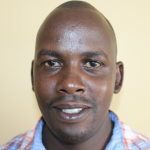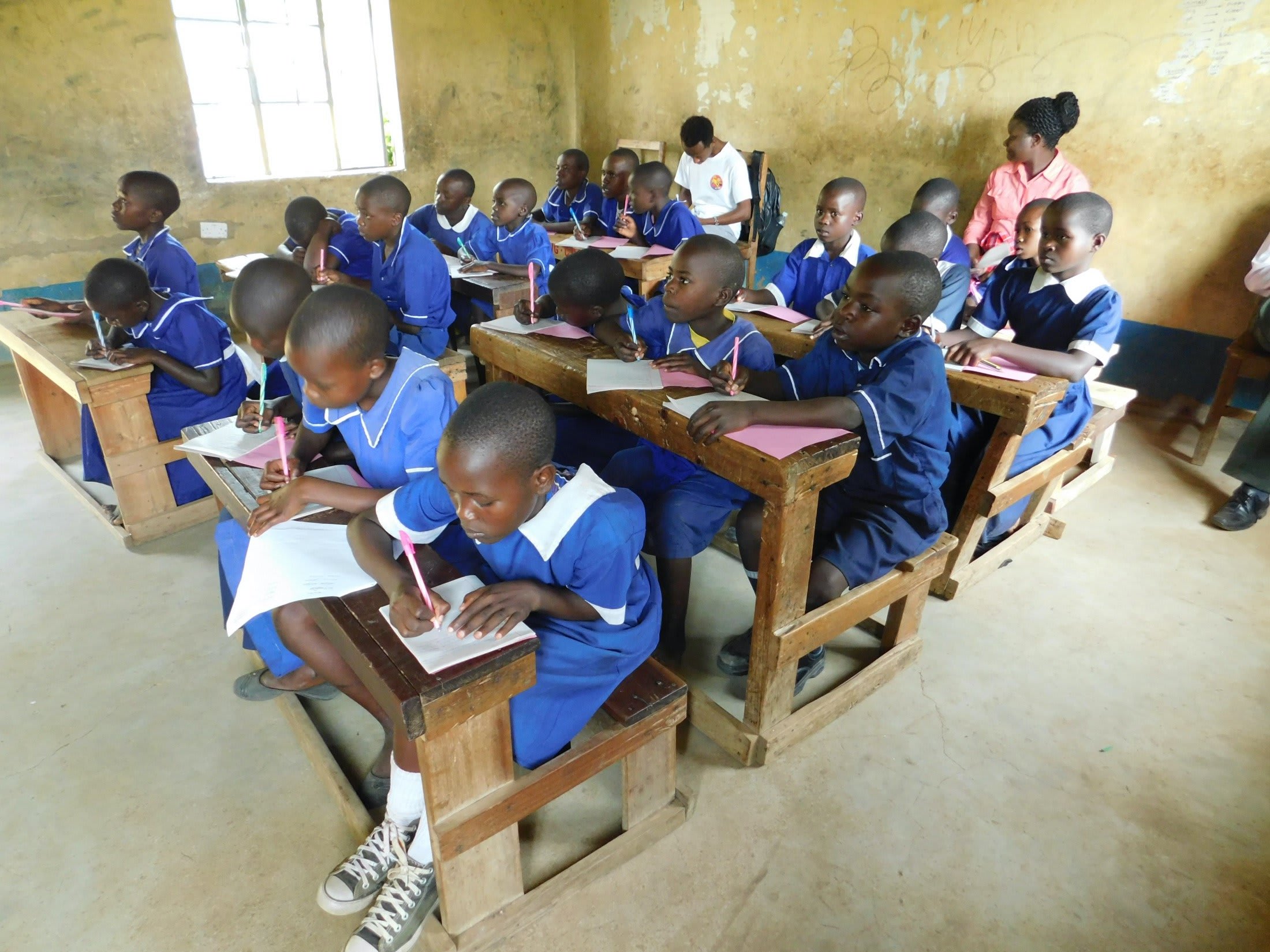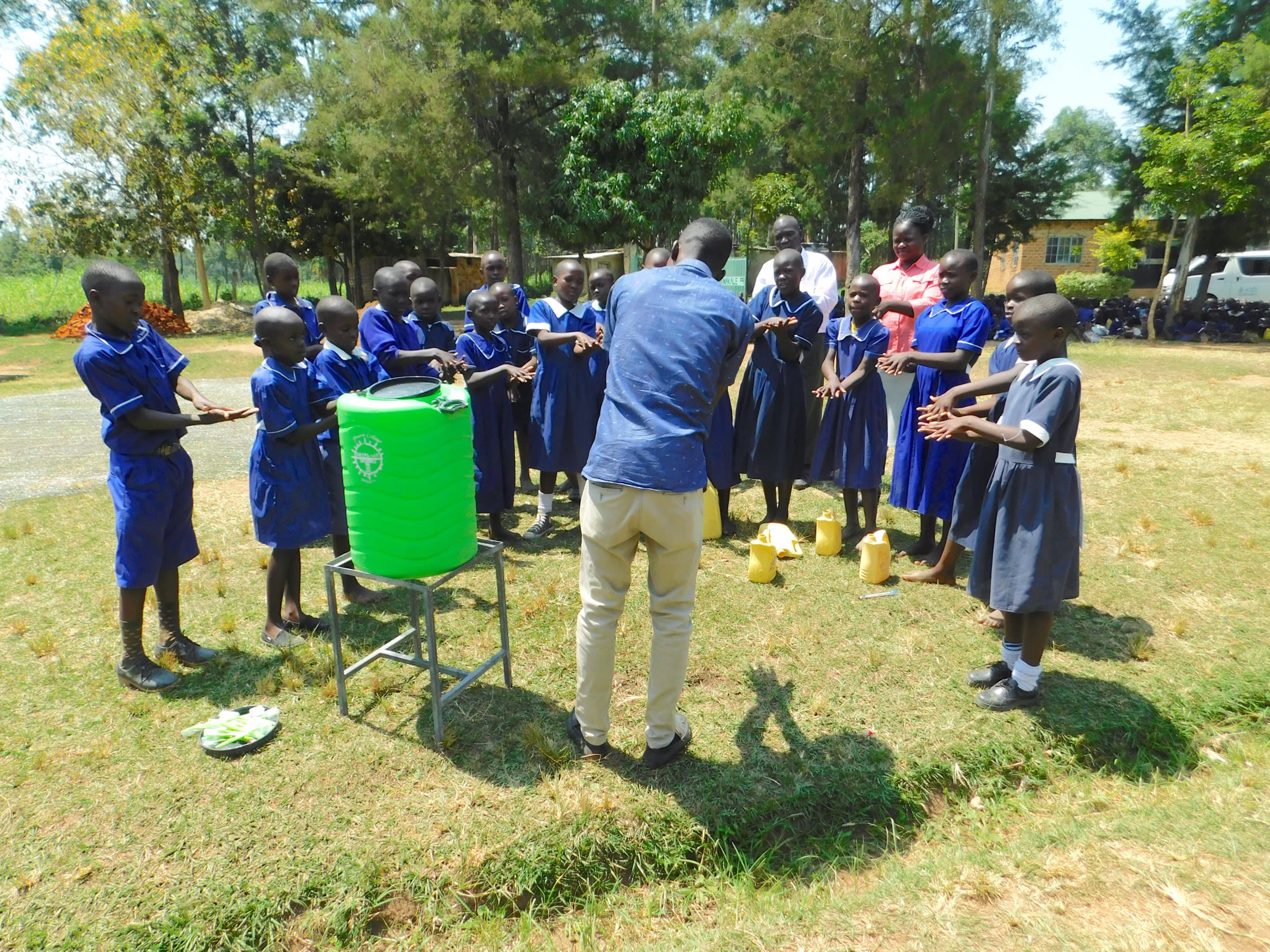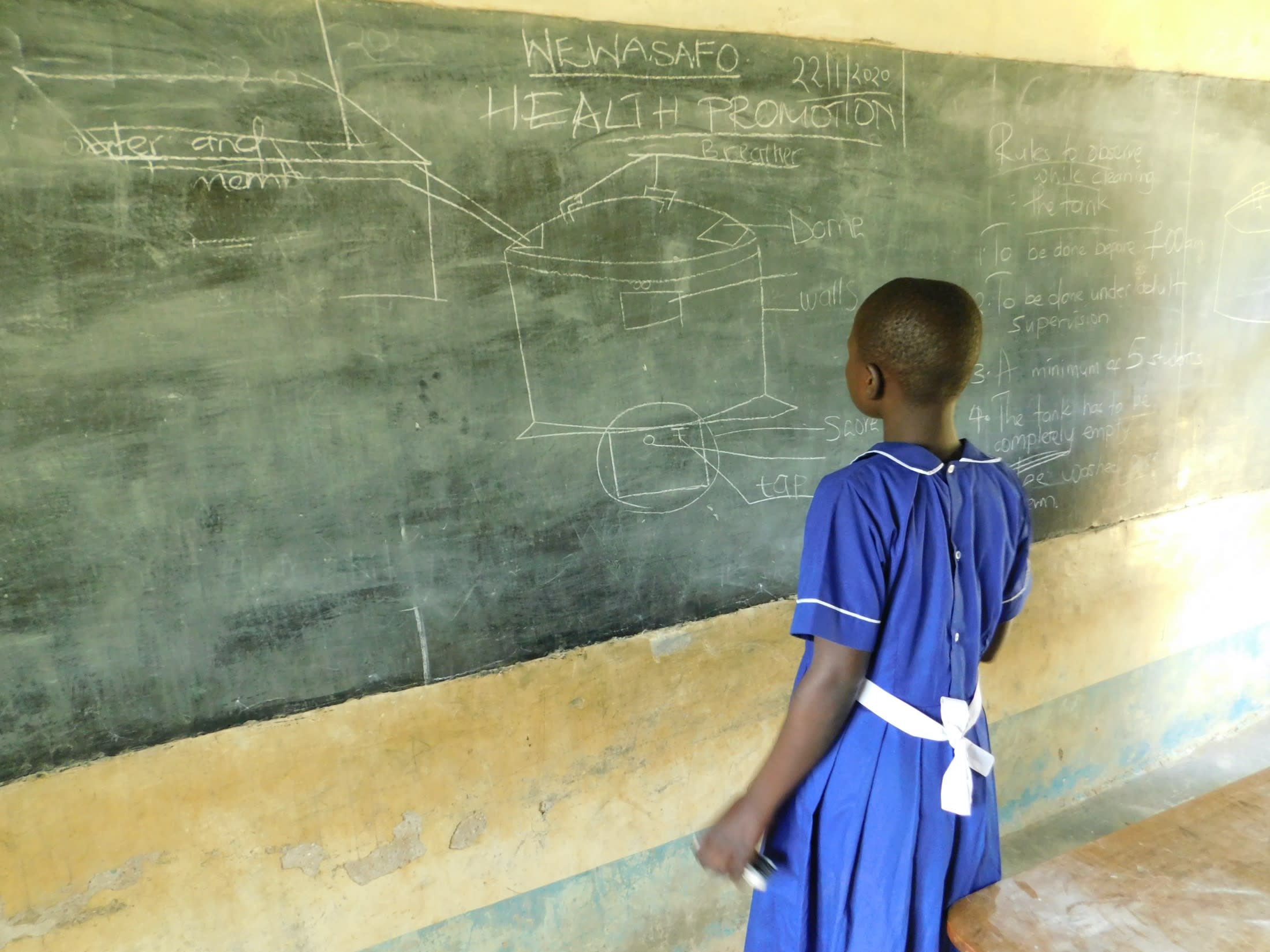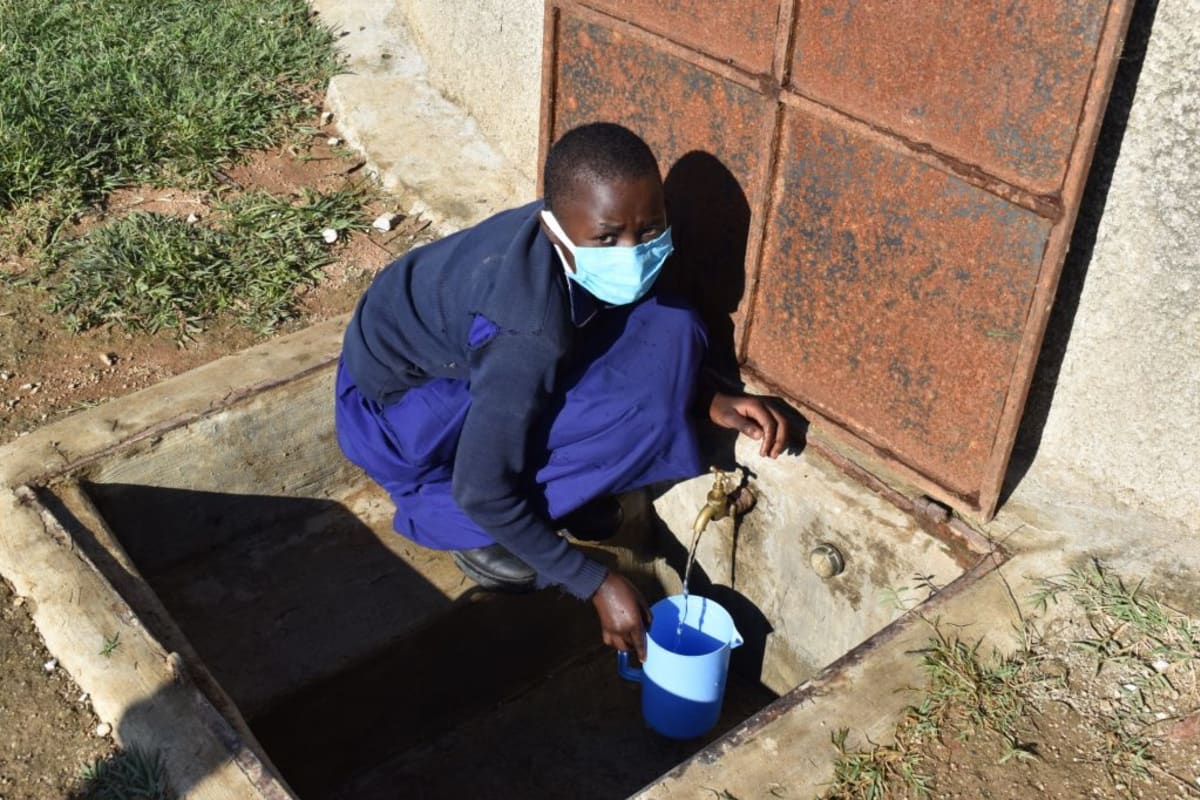"Water from our main source is not reliable throughout the year. This at times makes us use water carried by pupils to the school which is not safe for consumption because when pupils are told to carry water, they collect anything called 'water' without minding whether it is safe or not. Using this water for drinking definitely has negative impacts," said Makale Primary School's Head Teacher Mrs. Grace Simwa.
The main water source Mrs. Simwa talks about is a protected dug well without a handpump on school grounds. To fetch water, students lower a bucket on a rope into the water and pull it up, pouring the water collected into their own containers. They then walk back to the school building and pool their water into the main storage container, or leave their containers outside for use.
They must do this every day to provide enough water for all drinking, cooking, and cleaning needs for the school's 440 students and 15 teachers and staff.
"Drawing water from the well is tiresome and time-consuming," said Deputy Head Teacher Mr. Zadock Mausi Ochieng, who explained that he only uses boiled water for drinking at the school since he does not trust the water from the well. But boiling water before use requires a lot of precious firewood and time, something that the school kitchen staff cannot always afford.
Drinking the well water is normally accompanied by waterborne diseases like typhoid, reported by the pupils and staff alike. During the dry season, the well dries up, requiring pupils to carry water from home and unknown water sources as Mrs. Simwa noted. Because the water is combined for use, even 1 contaminated source means everyone suffers. The dry season brings even more cases of water-related illnesses that lead to absenteeism for both students and teachers.
Makale Primary School was established in 1996 by the community to reduce the distance that their pupils had to walk for an education. The surrounding village is lush and full of agriculture, in part made possible by the area's clay soil.
This same soil, however, drives the school's pit latrines to overflow during the rainy season, putting not just students but the nearby community members at risk of diseases from the sewage. Many of the latrines are almost full as it is, so the rains bring mixed emotions each year: relief for the water they will provide in the wall, but fear, disgust, and shame for what they will do to the latrines.
What we can do:
Rain Tank
A 75,000-liter rainwater catchment tank will help alleviate the water crisis at this school. The school will help collect the needed construction materials such as sand, bricks, rocks, and water for mixing cement. We will complement their materials by providing an expert team of artisans, tools, hardware, and the guttering system. Once finished, this tank will begin catching rainfall that will be used by the school’s students and staff for drinking, handwashing, cooking, cleaning, and much more.
We and the school strongly believe that all of these components will work together to improve standards at this school, which will help lead to better student academic performance and will help unlock the opportunity for these students to live better, healthier lives.
Handwashing Stations
There is currently just 1 tippy tap for students to wash their hands after using the latrines or before eating lunch, but not often enough water to do so.
The student health club will oversee the 2 new handwashing stations we will provide, and make sure they are kept clean and in working condition. The club leaders will fill the handwashing stations with water daily and make sure they are always supplied with a cleaning agent such as soap or ash.
VIP Latrines
2 triple-door latrine blocks will be constructed with local materials that the school will help gather. 3 doors will serve the girls while the other 3 will serve the boys. All of these new latrines will have cement floors that are designed to be easy to use and to clean. And with a rain tank right on school property, there should be enough water to keep them clean.
Training
We will hold a 1-day intensive training on improved hygiene, health, and sanitation habits at this school. Our team of facilitators will use a variety of methods to train students and staff, including participatory hygiene and sanitation transformation (PHAST) and asset-based community development (ABCD). We will initiate a child-to-child (CTC) student health club, which will prepare students to lead other pupils into healthy habits at school and at home. We will also lead lectures, group discussions, and provide illustrative handouts to teach health topics and ways to promote good hygiene practices within the school. We will then conduct a series of follow-up trainings before transitioning to our regularly scheduled support visits throughout the year.

 Rainwater Catchment
Rainwater Catchment
 Rehabilitation Project
Rehabilitation Project













